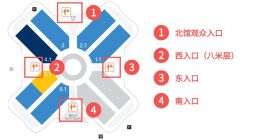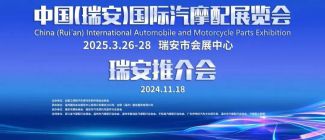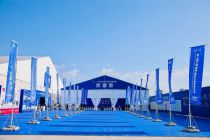Scan QRCode

However, in a few years, the range extender, which was once referred to as "outdated technology" by a traditional large factory, has become the mainstream of the current automotive technology route. From new forces to multinational car companies, they have all entered the market; Consumers have also given positive feedback through foot voting, and whether it's the monthly or weekly sales chart, the top performers are mostly range extender players.
According to statistics from the China Association of Automobile Manufacturers, sales of extended range vehicles have achieved growth rates of 218%, 130%, 154%, and 70.9% respectively from 2021 to 2024, far exceeding the growth rates of pure electric vehicles and gasoline vehicles during the same period.
From 'backward' to 'truly fragrant', behind the comeback of range extender technology, who is swimming naked?
The concept of extended range has become popular among domestic new energy brands, and their reason for choosing to enter the market with extended range is also very simple. In the field of new energy technology, the structure of extended range is the simplest, and the corresponding threshold is also lower.
The so-called range extender, in layman's terms, refers to installing a "power bank" (engine) on the motor that can increase the mileage. The engine and motor are connected in series, and the engine is responsible for generating electricity and does not participate in driving. And hybrid and plug-in hybrid engines also need to participate in driving, using more complex series parallel structures.
The complexity of the structure increases the difficulty and cost of car manufacturing, which is obviously not suitable for new players who lack technical reserves and money. Therefore, the extended range is more friendly to new players, and with the packaging of "refrigerator, TV, and sofa", users' interests naturally arise.
Moreover, with the addition of "power banks" for extended range vehicles, it can completely solve the range anxiety of tram users. At present, from social animals to student party members, almost everyone has a power bank when going out. You can choose not to use it, but you cannot do without it, otherwise you will feel anxious. Tram users also feel the same way when going out. No one wants to have long queues in front of charging stations in service areas during short holidays.
Simplicity does not mean backwardness
Indeed, the structure of range extender technology is simpler compared to plug-in hybrid technology, but simplicity does not necessarily mean low technical value, because there is still a huge gap between "usable" and "easy to use".
Similarly, adding a range extender to the motor, if the presence of the range extender is too strong, it will appear very abrupt. As a result, for electric vehicles, the range extender is far less quiet than pure electric vehicles, and the driving experience is not as smooth as pure electric vehicles.
Moreover, if the system coordination ability between the range extender and the motor is not good enough, this "power bank" will appear redundant. Once the battery is insufficient, the overall power of the vehicle will plummet, acceleration will be weak, overtaking will be ineffective, and the performance on the highway will not be as good as that of gasoline cars in the same class, which is known as "having an electric dragon but not an electric worm".
This is actually a contradictory situation. You hope that the range extender can bring a "seamless" experience, while also hoping that it can be "top of the line" at critical moments. Car companies with insufficient technical strength can only avoid the heavy and focus on the light. Come on, let's experience the charm of the "refrigerator, TV, and sofa" more. As for the rest, it's enough to use it.
A good extended range car, of course, cannot stop at "just being usable". Smart electric vehicles do have a trend towards consumer electronics, but smartphones can be replaced every two to three years, and there are not many families who can achieve the goal of replacing cars every two to three years.
In addition to power loss anxiety and noise anxiety, the efficiency of energy replenishment, battery degradation, and service life also affect the user experience of extended range vehicles.
How can users without home charging stations quickly replenish their energy? How can a pure electric range of one to two hundred kilometers support one week of travel? Will frequent fast charging and discharging significantly reduce battery life? These seemingly trivial pain points are precisely the watershed between the strength and weakness of car companies' range extending technology.
That's why we emphasize that there is a threshold for range extension. To truly excel in range extension technology, car companies should have the ability to independently develop core components such as engines and have the ability to solve full stack power system problems, rather than relying on external suppliers for matching.
Finally, in this wave of extended range, we see traditional giants taking action.
The strength of large factories
Although range extender has only become popular in recent years, it is not a new concept. As early as over 100 years ago, Porsche's Lohner Porsche "Mixte", which used a combination of lead-acid battery packs and gasoline generators, had the embryonic form of the extended range concept, but it was only at the stage of experimental cars.
The true inventor of extended range technology in mass production is General Motors. In 2010, the modern extended range vehicle Chevrolet Volt was mass-produced and launched, making General Motors the standard setter for modern extended range technology.
Buick launched its first domestically produced extended range vehicle VELITE 5 in 2016, making SAIC-GM a pioneer in domestic extended range models.
As a pioneer in extended range technology, General Motors has the advantage of being the first to complete the integration of electric drive systems, mastering core technologies such as inverter double-sided water cooling and motor three in one integration, and accumulating profound knowledge in this field.
When the market matures, the inventor of extended range can stage the scene of the king returning, just like what SAIC GM is doing now.
In April of this year, SAIC-GM officially announced the new Buick Xiaoyao Super Fusion Architecture on "Buick Day".
As the first integrated new energy vehicle architecture based in the Chinese market and developed by a local team from Pan Asia, Xiaoyao Architecture not only embodies the safety and quality standards of a century old manufacturer like General Motors, but also integrates any advanced technology, providing a foundation for the development of the new generation of extended range technology.
On August 7th, SAIC General Motors officially released the "Zhenlong" extended range system, as well as the first mass-produced car to use this system, the Buick Zhijing L7. As a component of the "Xiaoyao Architecture" power domain, the "Zhenlong" extended range system consists of a brand new hybrid exclusive engine, a brand new Autoenergy 2.0 platform electric drive, and a battery family, all of which are self-developed by SAIC General Motors.
The strength of large companies is also reflected in their deep accumulation of user data. At the beginning of SAIC General Motors' establishment in 1997, the Pan Asia Technology R&D Center was simultaneously established. Over the past 28 years, with the exponential growth of SAIC General Motors' user base, this joint venture technology center has also accumulated rich real car usage data from Chinese users.
These data are a treasure trove, allowing SAIC General Motors to set targeted development conditions for the "True Dragon" range extender system based on users' real fast charging frequency, driving intensity, and other driving characteristics, meeting users' real driving needs. These are naturally incomparable to car companies that have only entered the industry halfway and have outsourced their parts.
It is precisely these accumulations that gave SAIC-GM General Manager Lu Xiao the confidence to shout the slogan "The inventor of extended range must redefine it" at the press conference.
A set of hardcore combination punches
Consumers' primary demand for extended range is to get rid of the range anxiety of pure electric vehicles. Considering that not all users have convenient charging conditions, the pure electric range of around 200km for the vast majority of extended range vehicles on the market is not enough.
The Zhijing L7, equipped with the "Zhenlong" range extender system, has a pure electric range of up to 302km, the longest in its class. The vast majority of users can achieve one charge per week, and the comprehensive range of 1400km+makes cross city travel more reassuring.
Even within a limited energy replenishment time, the efficiency of the Zhijing L7 is higher than its competitors in the same class. It is equipped with a 40.2kWh Ultra Energy battery that supports 120kW fast charging, which can charge from 30% to 80% in 18 minutes. With the same amount of time spent charging at a public station, you can still replenish more mileage than others.
It has to be said that SAIC General Motors will name it. As the name suggests, the "True Dragon" range extender aims to eliminate the drawbacks of traditional range extender models that have "electric dragons but no electric bugs".
The 1.5T hybrid dedicated engine independently developed by SAIC General Motors has natural advantages in conversion efficiency and peak power. It can output a maximum power of 115kW and a fuel to electric conversion rate of up to 3.6kWh/L. Coupled with the 100kW range extender motor, which has the highest power in the same class, the power output is comparable to a 3.0T V6 fuel engine.
Combined with the discharge capacity of 315kW/9C rate at full charge and the output of 260kW/7.8C rate at low charge, the time difference between 0-100km/h acceleration and high-speed overtaking is less than 0.1S, which is almost imperceptible to users, regardless of whether it is fully charged or low charge.
Even if you leave the reinforced concrete urban forest and wander around the great rivers and mountains of the motherland, whether it is the high altitude snow covered plateau, the extremely hot Turpan Basin or the extremely cold forest, you can enjoy the same strong power output in any extreme scenario, without worrying about the degradation of vehicle performance under severe conditions.
The test results show that the Zhijing L7 can climb 2000m in 20 minutes at the Kunlun Mountain Pass at an altitude of over 4000 meters, and can continuously accelerate at full throttle for 20+times without degradation in high-temperature areas. It can also achieve battery cold start in extreme battery depletion scenarios (SOC ≈ 1%) at -40 ℃.
Of course, apart from the performance differences felt by users with their feet in any scenario or working condition, there are also ears and wallets that are insensitive.
The "noise" of extended range is caused by engine intervention noise and vibration issues. The "True Dragon" extended range adopts Silentium static drive technology, which optimizes the system noise comprehensively from three dimensions: noise source, transmission path, and control strategy. The effect is that the mainstream extended range vehicle models in the industry currently have engine intervention noise of around 2dB, while the Zhijing L7 can control this value below 0.5dB.
As for the indifference of the wallet, firstly, it has low fuel consumption. The comprehensive fuel consumption of the Zhijing L7 is only 0.5L per hundred kilometers, and it hardly needs fuel for daily commuting. Its economy can be comparable to that of a pure electric car.
In addition, there is also the cost of using electric cars throughout their entire life cycle. Many oil car enthusiasts who firmly refuse to buy electric cars have a theory that "despite the fact that electric cars now save on charging, every two years the battery is scrapped and replaced with a new one, which is more expensive than replacing the engine. The money saved earlier will go to waste
The extended range battery of "Zhenlong" can achieve over 3700 full charge and discharge cycles, and has passed 2000+hours of charge and discharge tests in the full temperature range of -40 ℃~60 ℃. The possibility of attenuation is greatly reduced, and it can achieve low attenuation for pure electric range of 640000 kilometers.
Based on an average of 15000 kilometers driven per year, we can achieve 43 years of low attenuation, so you can use it with confidence.
As for safety concerns such as battery self ignition, the products produced by major manufacturers are even more prestigious. It should be noted that starting from the Autoenergy 1.0 platform, Buick's new energy vehicles have achieved zero self ignition after driving over 1.5 billion kilometers, which can be regarded as the industry ceiling for battery safety.
So, when the combination of ultra long range, performance without degradation, ultimate quietness, safety and longevity was punched down, SAIC General Motors shouted, "The True Dragon Range extender will be the best range extender technology in the industry, and the Buick Zhijing L7 will be the best range extender sedan in the industry," I was convinced.
Any technological dispute ultimately returns to user experience. When technology no longer serves parameters, but focuses on solving users' real pain points, the experience undergoes a qualitative change.
With 15 years of technological accumulation and hardcore engineering, SAIC General Motors has directly penetrated the "ceiling" of extended range technology. This time, the "True Dragon" extended range technology has officially announced the arrival of the 2.0 era of extended range technology with a calm attitude of "full power and no difference in power loss".
AMS2024 Exhibition Guide | Comprehensive Exhibition Guide, Don't Miss the Exciting Events Online and Offline
Notice on Holding the Rui'an Promotion Conference for the 2025 China (Rui'an) International Automobile and Motorcycle Parts Exhibition
On September 5th, we invite you to join us at the Wenzhou Auto Parts Exhibition on a journey to trace the origin of the Auto Parts City, as per the invitation from the purchaser!
Hot Booking | AAPEX 2024- Professional Exhibition Channel for Entering the North American Auto Parts Market
The wind is just right, Qianchuan Hui! Looking forward to working with you at the 2024 Wenzhou Auto Parts Exhibition and composing a new chapter!
Live up to Shaohua | Wenzhou Auto Parts Exhibition, these wonderful moments are worth remembering!
Free support line!
Email Support!
Working Days/Hours!





